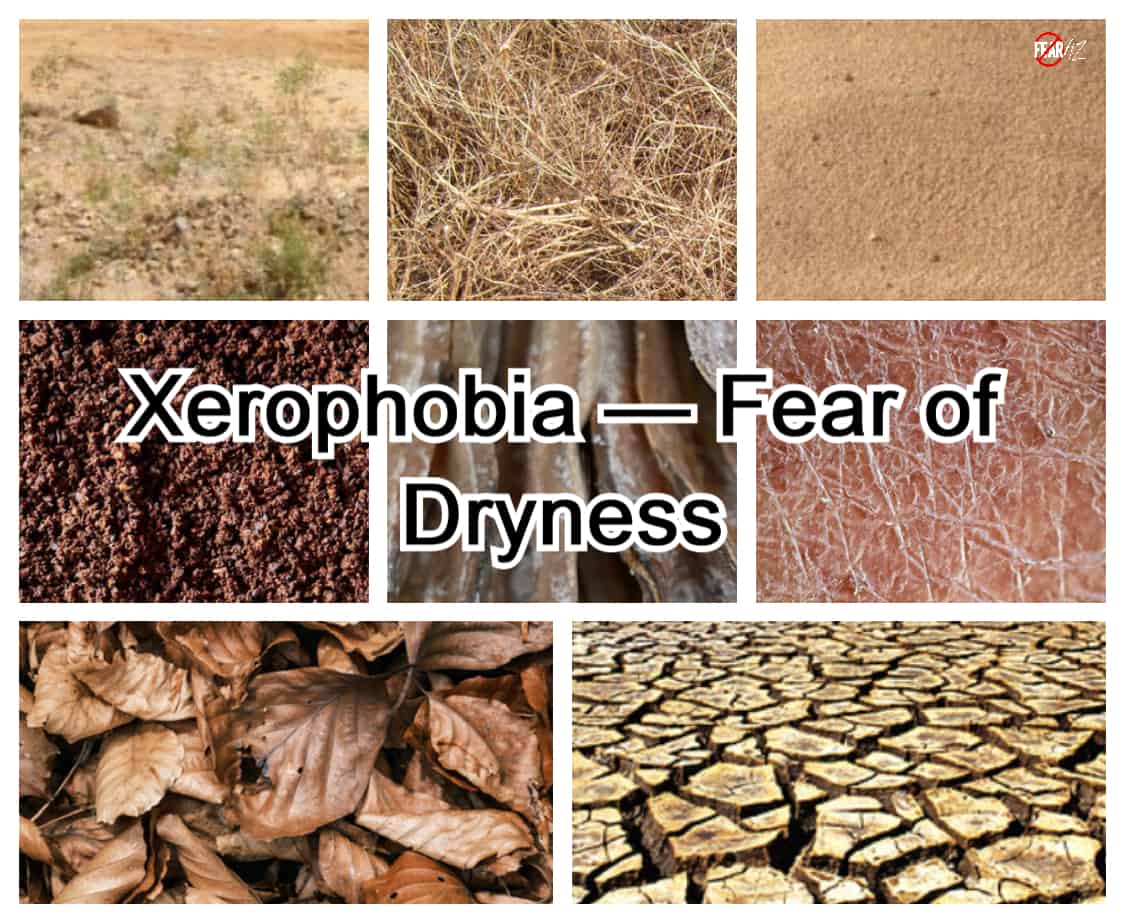Share This Article
Do You Fear Dryness? Xerophobia Explained
Do you avoid going to dry places and find yourself hyperventilating just thinking about entering a desert? Does the thought of being thirsty or having dry skin make you want to consume lots of water or moisturize heavily?
If this sounds familiar, you probably have xerophobia, or the fear of dryness. Experiencing intense fear at the mere thought of dryness can be a nightmare, especially when those around you don’t understand the feeling.
But don’t let that stop you from overcoming your fear.
Keep reading to better understand xerophobia and learn how you can overcome it.

Everything You Need to Know about Xerophobia
Among all the different kinds of phobias, xerophobia is an uncommon one.
It is an irrational fear of dryness or fear of dry hands that causes the person suffering from it to experience intense fear of being exposed to dryness. It can cause one to be unable to think about dry places like deserts, about becoming thirsty, or about having dry skin without breaking into a sweat.
Furthermore, experiencing dryness in reality might even cause them to have a panic attack. The person may also take excessive steps in their day-to-day life to avoid becoming parched or having panic attacks from their phobia of dry skin or the Fear of Dry Hands.
They will also try to avoid triggers that remind them of dryness or expose them to dryness.
While avoidance works in the short term, it doesn’t help the person overcome the fear. Long-term avoidance can also worsen the phobia and how you react to it, resulting in obsessive behaviors and extreme anxiety or stress.
Successfully steering clear of any fear stimuli takes work and energy. It may drain the person and prevent them from living a full life.
That’s why it’s important to acknowledge that the fear is irrational, find what causes this phobia, and take steps to deal with it.
What Causes the Fear of Dryness?
The first step in overcoming the phobia of dryness is understanding what’s causing it. But, like most phobias, xerophobia doesn’t have a known definitive cause.
Xerophobia causes are usually rooted in genetics or environment.
Genetic factors refer to a family history of phobia or mental disorder. A person with a family history of phobias or anxiety is at a higher risk of developing phobias in their lifetime.
Environmental factors, on the other hand, refer to traumatic experiences in the past or social learning. Experiences with drought, famine, or water shortages or an ingrained fear of such a phenomenon can also develop into a phobia of dryness. Similarly, someone who has suffered an illness that was caused due to dryness might also develop xerophobia.
Sometimes, a genetic predisposition or traumatic experience doesn’t develop into a phobia unless a trigger is introduced into the person’s life.
Symptoms of Xerophobia
An irrational fear of dryness can cause a variety of psychological and physical symptoms. The type of symptoms and their severity can also change depending on the cause of the fear and its triggers.
Here are some common symptoms to help you identify xerophobia.
Physical Symptoms
- Increased heart rate or palpitations
- Irregular breathing
- Dry mouth
- Nausea
- Muscle tension
- Feelings of dizziness or fainting
- Tremors
- Excessive sweating
- Hot/cold flashes
- Migraine
- Aversion to air conditioning
- Aversion to winters and cold weather
- Obsessively moisturizing skin
- Performing activities that produce sweat
- Avoidance of deserts
Psychological Symptoms
- Butterflies in the stomach
- Fear of becoming dehydrated
- Fear of the surroundings becoming dry
- Fear of dry skin or cracked skin
- Fear of impending doom
- Panic attacks
- Difficulty coping with anxiety
- Avoiding places or situations where dryness might be encountered
- Anxiety when in a very dry area
- Anxiety when thinking of dryness
- Anxiety when thirsty
According to the DSM-5, a person should experience at least three to five of these symptoms to be diagnosed with phobia. The symptoms must also last for at least six months.
It is important to remember that one person’s experience with the fear of dry skin or dryness can look very different from another’s.
How Do You Deal with Xerophobia?
There’s no proper treatment for xerophobia. So, although many treatment options are available, none guarantee a cure.
The best treatment for this phobia seems to be a mix of professional and self-help therapies.
Self-Help — Ways to Help Yourself
Self-help is a great place to start with xerophobia treatment. It involves simple steps and activities that anyone can perform without much effort.
These activities can help a person cope with the symptoms and fear while strengthening their mind and body to overcome it.
Self-help strategies can include but aren’t restricted to:
- Yoga
- Meditation
- Exercise
- Nutrition
The person can also seek support groups or confide in a trusted friend or family member to help cope with their fear.
Professional Help for the Fear of Dryness
Professional xerophobia treatment involves working with a therapist to navigate and understand the scope of your phobia, finding its root cause, and devising a treatment plan.
Some of the popular therapies used by therapists to treat phobias include:
- Cognitive behavioral therapy (CBT)
- Mindfulness-based stress reduction (MBSR)
- Neuro-linguistic programming (NLP)
- Dialectical behavior therapy (DBT)
- Exposure therapy
- Eye movement desensitization and reprocessing (EMDR)
Each therapy takes on a different approach, which your therapist will explain to you before beginning.
Your therapist might start with one of these treatments and then move on to another or recommend more than one method. The choice of therapy depends on the person and their unique condition.
Learning to Cope with Xerophobia
While overcoming xerophobia is no short journey, the above-mentioned strategies and therapies should help make it easier to cope with your fear, its triggers, and its symptoms so that you can live your life without letting the fear control you.
Additionally, it helps to focus on positive thoughts and ask for support from family and friends. Having a support system can help keep your anxiety levels low and enable you to work on overcoming the fear.
In Conclusion
Small actions can build over time and help reduce your perception of fear and its responses. We hope this guide helps you make the right changes that put you on the path to recovery. So, the next time someone’s planning a trip to a tropical desert, you too can rejoice while making the plans!




